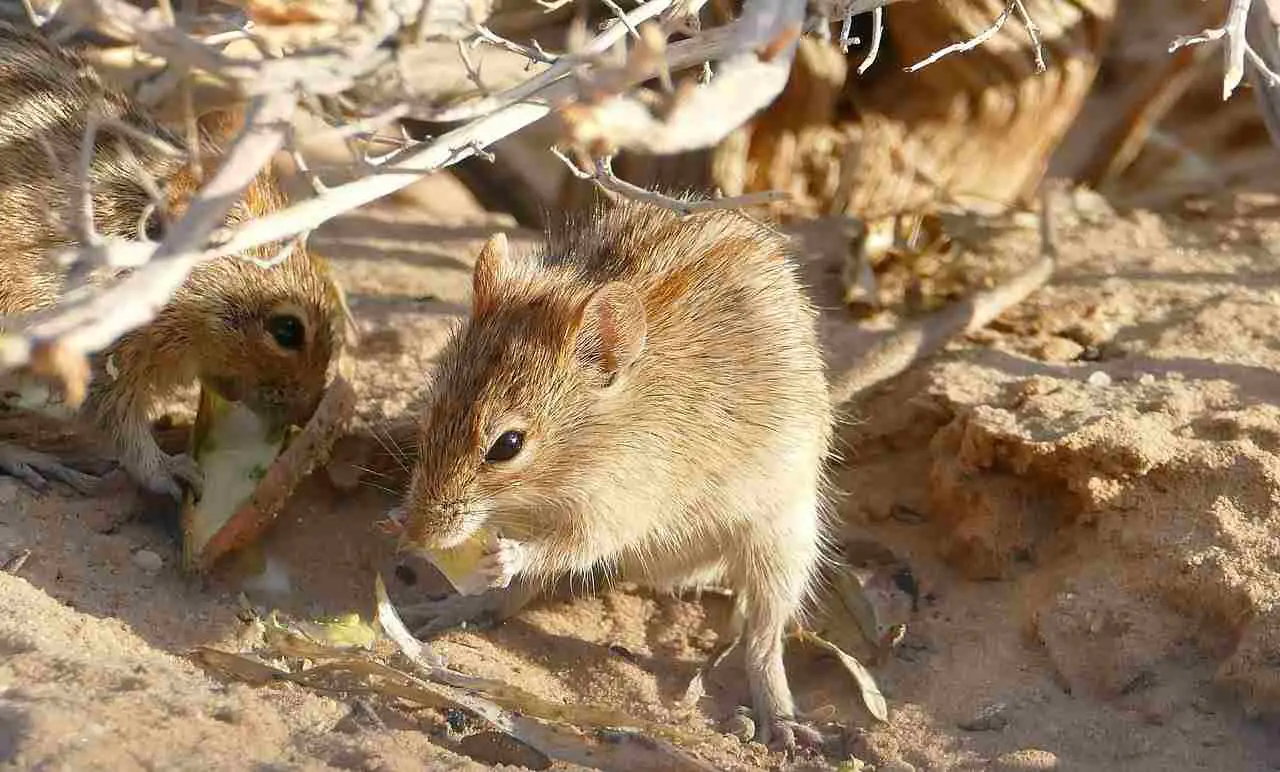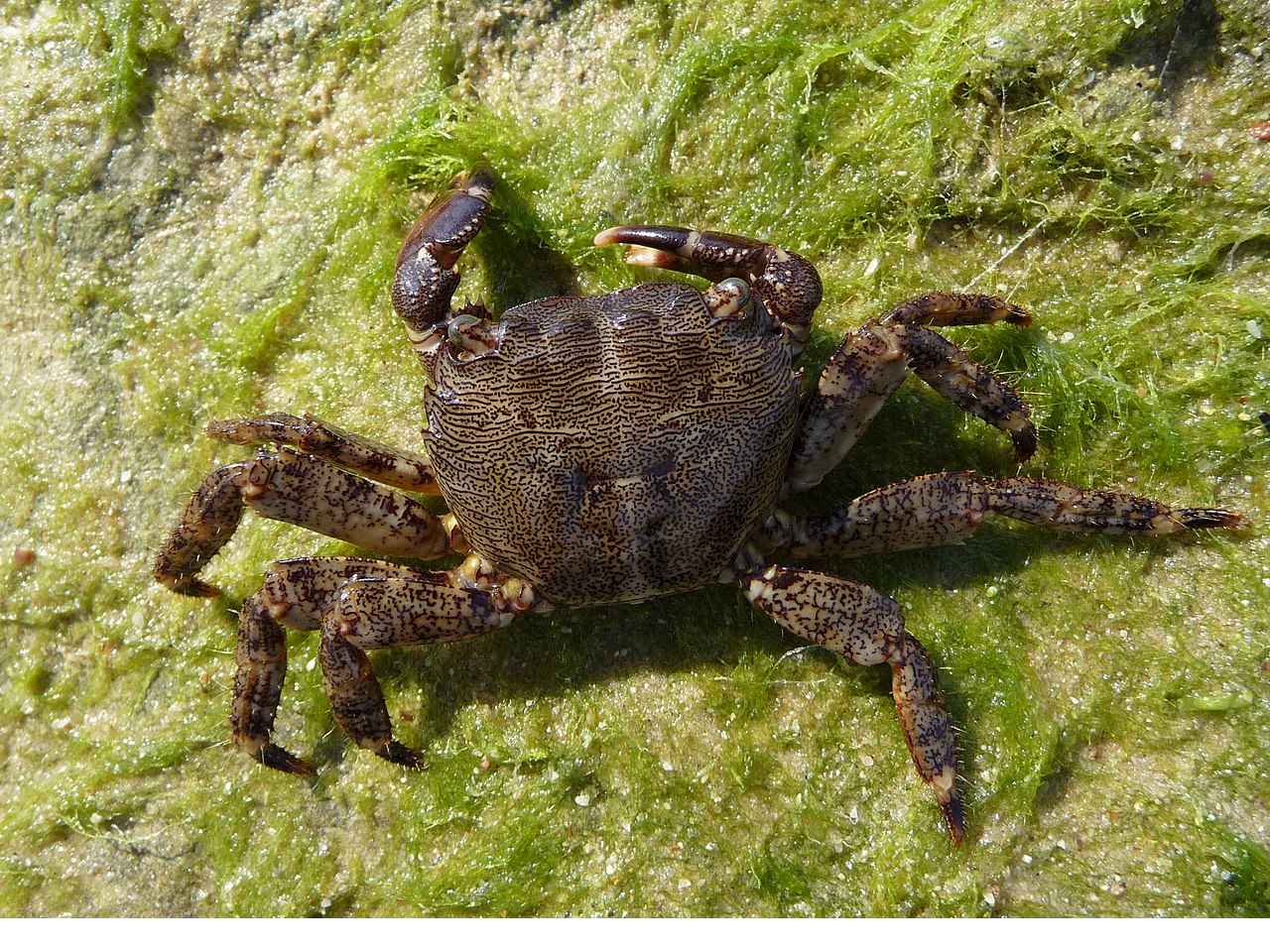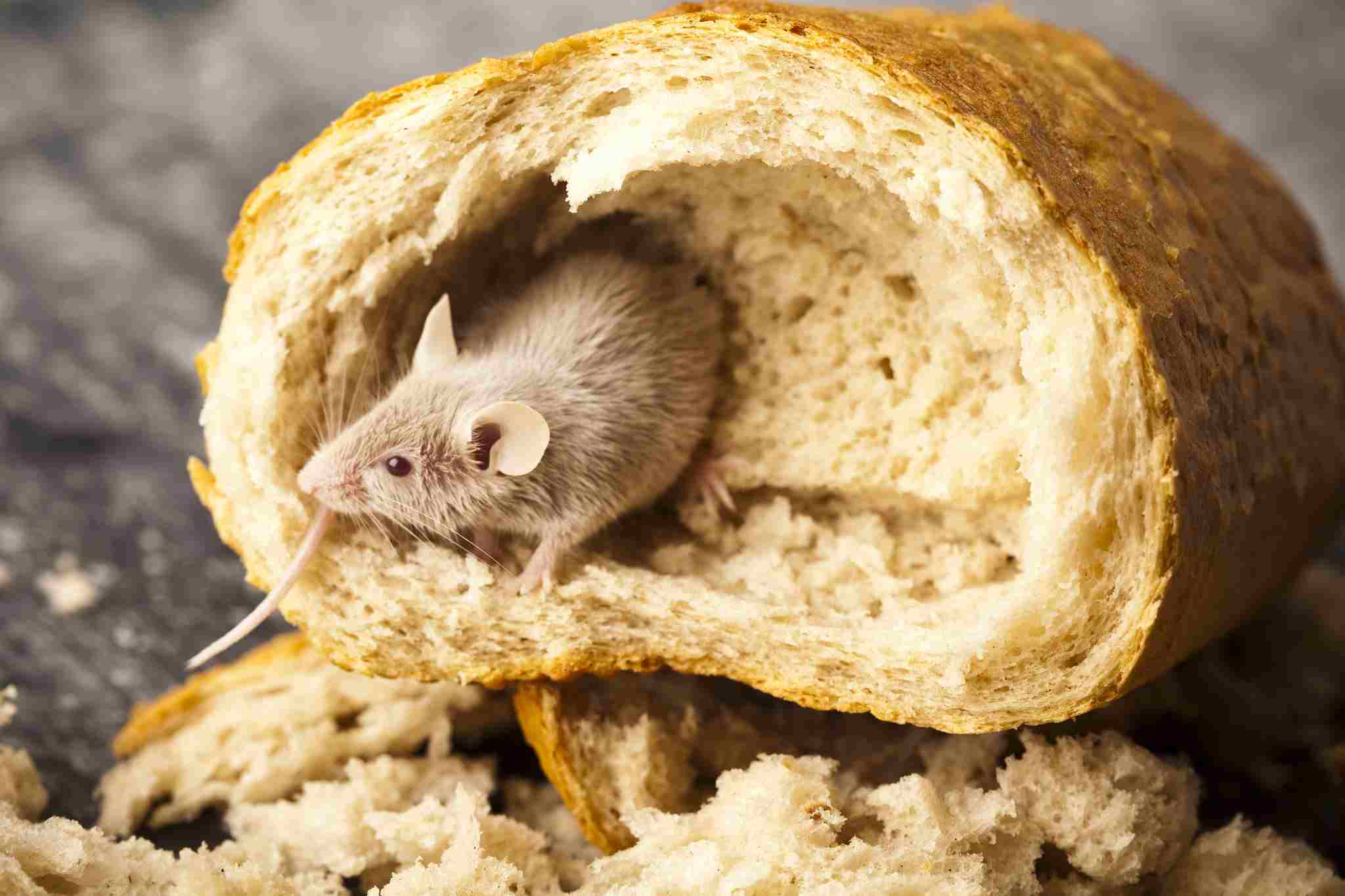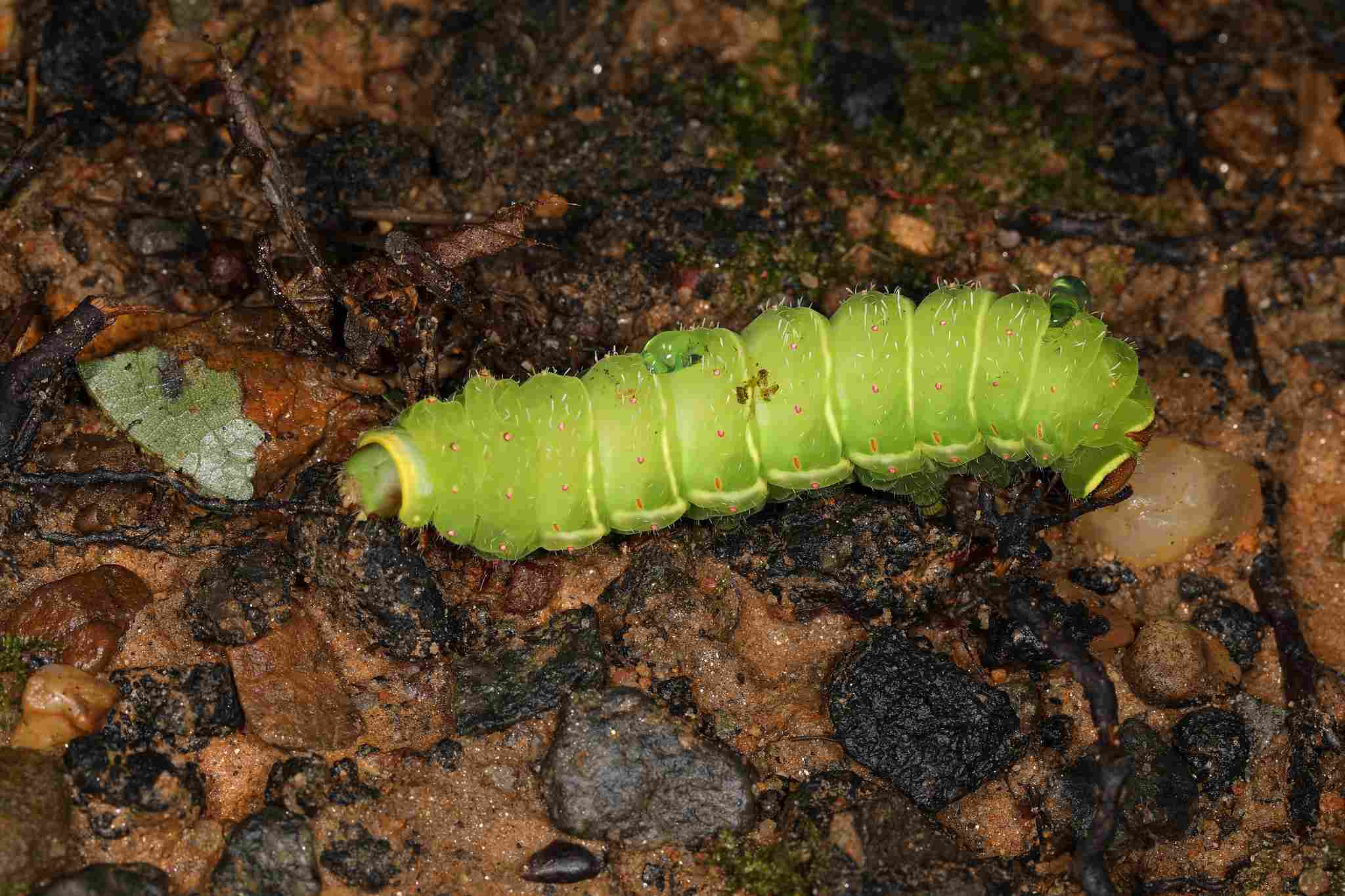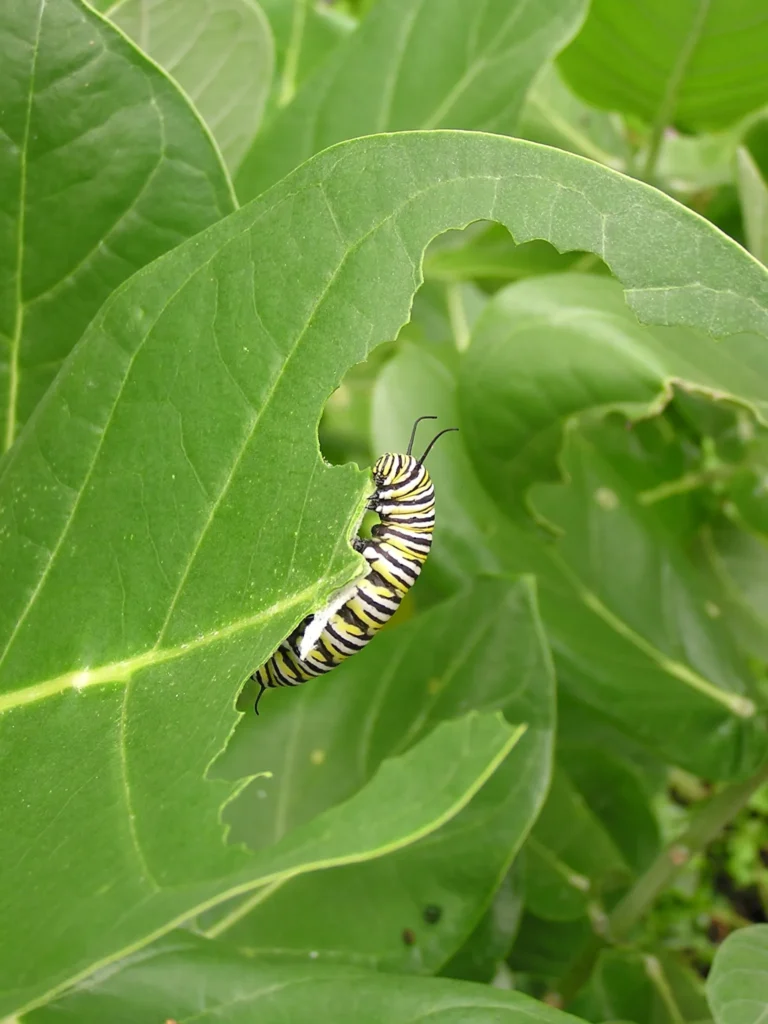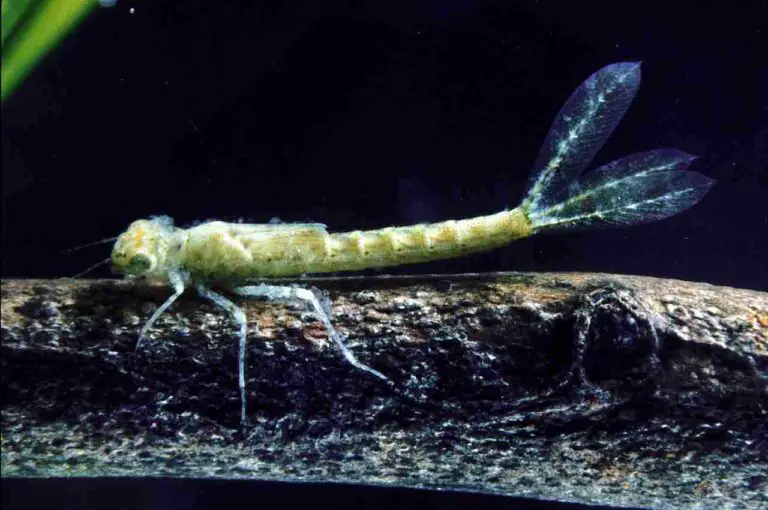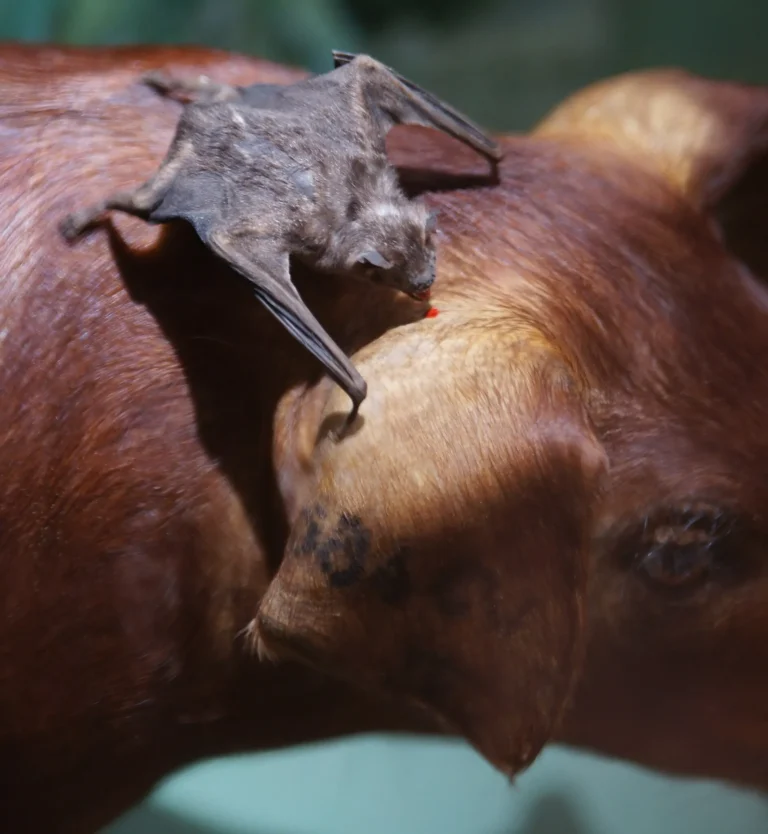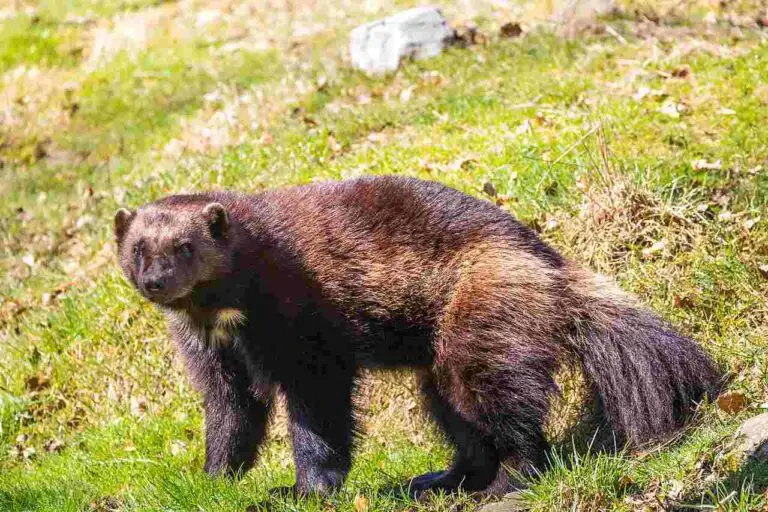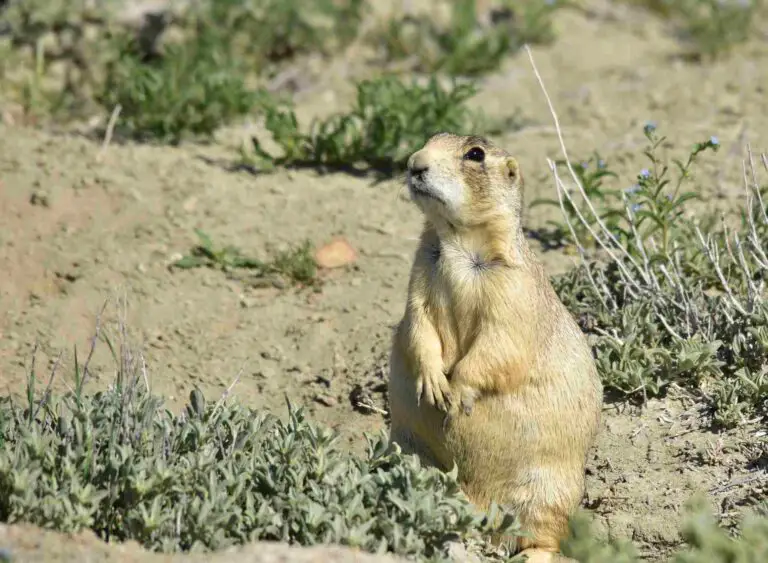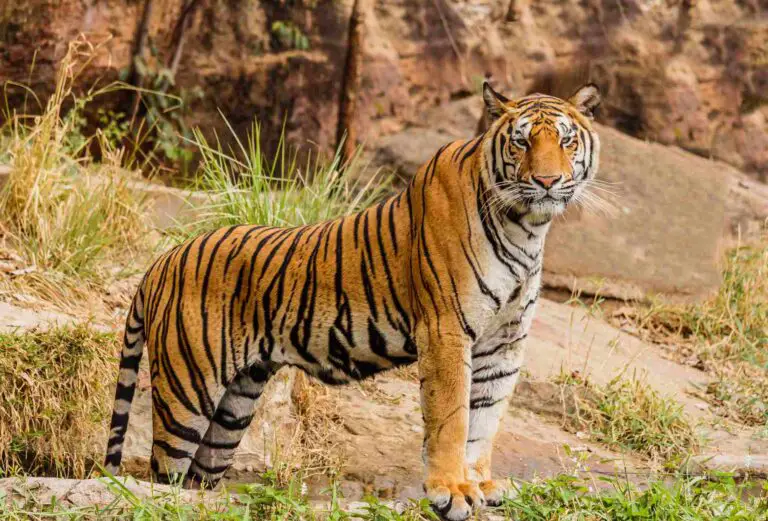Is a Mouse a Consumer? Overview of the Trophic Position and Function of Mice
A mouse is a consumer in the ecosystem or food chain because it acquires energy and nutrients by consuming other organisms, or organic matter from such organisms.
Below is a discussion of the trophic role and position of mice, especially with regards to their function a consumers.
Is a Mouse a Producer or Consumer?
When considering the trophic position and function of mice in an ecosystem, it becomes clear that they are indeed consumers. Unlike producers, such as vascular and non-vascular plants, mice do not synthesize their own biomass. Instead, they acquire energy and nutrients by consuming other organisms or organic matter derived from these organisms. Let’s explore further why mice are classified as consumers rather than producers.
One reason why mice are not considered producers is their mode of nutrition. Mice have a heterotrophic mode of nutrition, meaning they rely on consuming organic matter for their energy needs. In contrast, producers, like plants, have an autotrophic mode of nutrition, producing their own energy through photosynthesis. This fundamental difference in nutritional strategies places mice firmly in the consumer category.
Another factor that distinguishes mice as consumers is their diet. Mice primarily feed on materials derived from producers, such as seeds, fruits, and vegetation. They are not capable of directly converting sunlight into energy like plants do. Instead, they rely on the energy stored in the organic matter they consume. This dependence on external sources of energy further supports their classification as consumers.
Furthermore, mice are biologically more complex than most producers. They possess specialized digestive systems that allow them to break down and extract nutrients from the organic matter they consume. This complexity is not typically found in producers, which further highlights the consumer nature of mice.
Reasons Why a Mouse is Not a Producer
1. Heterotrophic Mode of Nutrition
One of the key factors that differentiates mice from producers is their heterotrophic mode of nutrition. Unlike producers, which are autotrophic and can synthesize their own food through photosynthesis, mice rely on external sources for their nutrition.
Mice are classified as heterotrophs, meaning they obtain their energy and nutrients by consuming organic matter from other organisms. They are unable to produce their own food through photosynthesis like plants or algae. Instead, mice feed on materials derived from producers, such as bulbs, seeds, and other plant matter.
As heterotrophs, mice are flexible and opportunistic feeders. They have adapted to consume a wide range of food sources, including fruits, grains, insects, and even small animals. This versatility in their diet allows them to survive in various environments and adapt to changing food availability.
Their heterotrophic mode of nutrition also contributes to their biological complexity. Mice have a more complex digestive system compared to autotrophic producers. They possess specialized teeth and digestive enzymes that enable them to break down and extract nutrients from the organic matter they consume. This complexity is necessary for mice to efficiently extract energy and nutrients from their food sources.
2. Mice Feed on Materials Derived from Producers
Mice are known for their ability to adapt to various environments and survive on a wide range of food sources. One of the key reasons why mice are not considered producers is because they feed on materials derived from producers, such as bulbs, seeds, and other plant matter. This reliance on external food sources sets them apart from autotrophic organisms like plants and algae.
Mice are flexible and opportunistic feeders, meaning they can consume a variety of food sources depending on what is available. This adaptability allows them to thrive in different habitats and adjust their diet according to the food resources present. For example, field mice may primarily feed on seeds and bulbs, while house mice may scavenge for food scraps in human settlements.
Their ability to consume materials derived from producers is essential for their survival. By feeding on plant matter, mice obtain the necessary energy and nutrients to support their biological functions. This includes carbohydrates for energy, proteins for growth and repair, and various vitamins and minerals for overall health.
Mice are not limited to plant matter alone. They are also known to consume fruits, grains, insects, and even small animals. This versatility in their diet allows them to adapt to changing food availability and maximize their chances of survival. It also highlights their role as consumers in the ecosystem, as they rely on other organisms for their nutritional needs.
In terms of trophic position, mice are considered primary consumers. They occupy the second level in the food chain, directly consuming plant matter and other organic materials derived from producers. This places them in a crucial position within the ecosystem, as they serve as a link between producers and higher-level consumers.
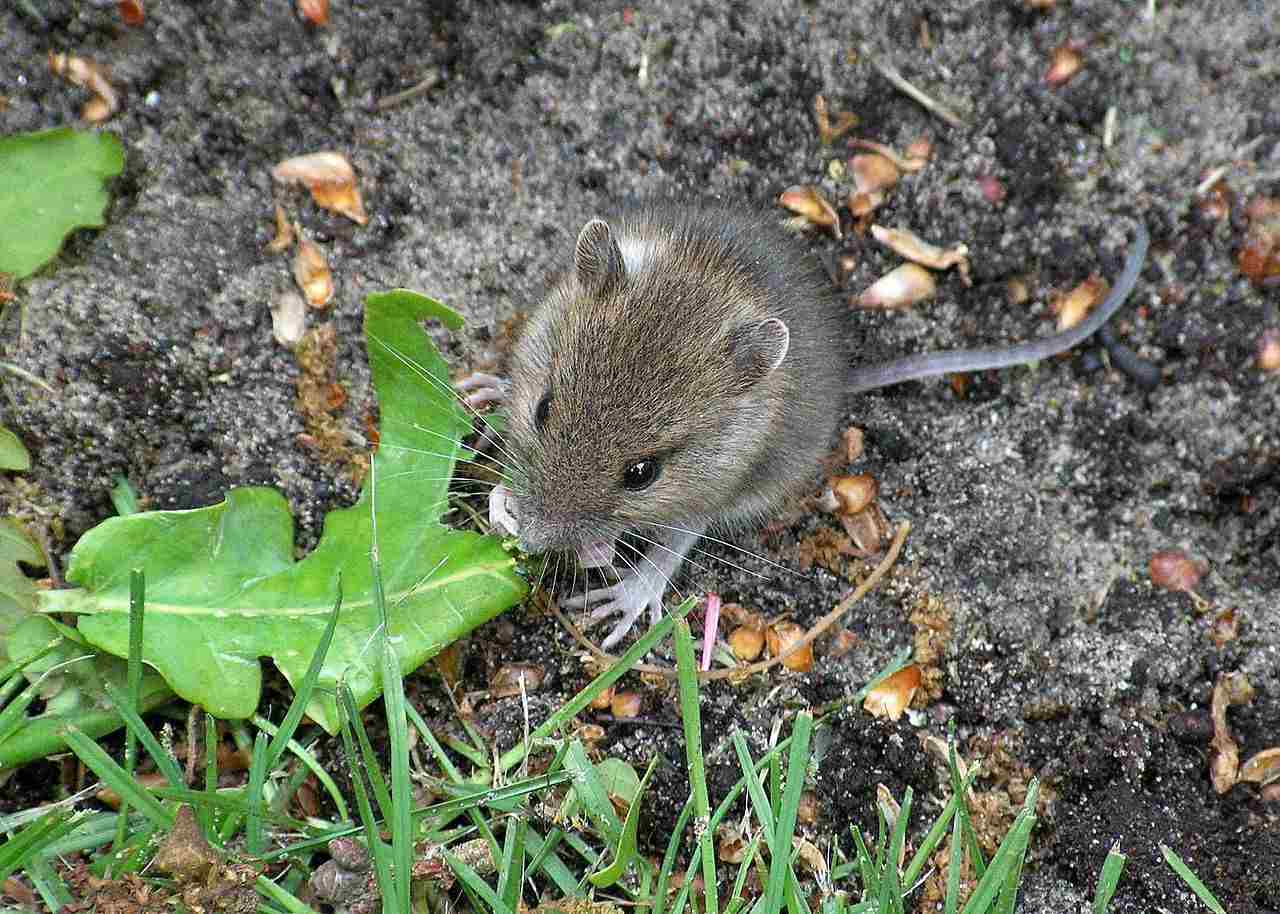
3. Mice are Biologically More Complex than Most Producers
Mice, despite being primary consumers, are biologically more complex than most producers. This complexity is evident in their organs and systems, which allow them to perform various functions necessary for their survival.
One aspect of their biological complexity is their digestive system. Mice have a specialized digestive tract that enables them to break down and extract nutrients from the plant matter they consume. This includes a well-developed stomach and intestines, as well as specialized enzymes that aid in the digestion process. These adaptations allow mice to efficiently extract energy and nutrients from their food, ensuring their physiological needs are met.
In addition to their digestive system, mice also possess a complex respiratory system. They have lungs that enable them to take in oxygen and remove carbon dioxide, facilitating the exchange of gases necessary for cellular respiration. This respiratory system allows mice to efficiently utilize the energy obtained from their food and carry out essential metabolic processes.
Furthermore, mice have a highly developed circulatory system. Their heart pumps oxygenated blood to various parts of their body, ensuring that oxygen and nutrients are delivered to their cells. This circulatory system also plays a crucial role in removing waste products from their cells and transporting them to the appropriate excretory organs for elimination.
Mice also possess a complex nervous system, which allows them to respond to their environment and coordinate their actions. Their brain and nervous tissues enable them to process sensory information, make decisions, and carry out complex behaviors. This complexity in their nervous system contributes to their ability to adapt to different environments and navigate their surroundings.
Lastly, mice have a complex reproductive system. They have specialized reproductive organs that allow for sexual reproduction, ensuring the continuation of their species. This reproductive system includes ovaries in females and testes in males, which produce eggs and sperm, respectively. Mice also exhibit complex mating behaviors and parental care, further highlighting their biological complexity.
What Type of Consumer is a Mouse?
A mouse is classified as a primary consumer, also known as a first consumer, first-order consumer, or herbivore. This means that mice primarily consume plant-derived materials, although they are also known to be omnivorous, occasionally consuming animal-based matter as well. Let’s explore why mice are considered primary consumers and what sets them apart in this trophic position.
One of the key characteristics of a primary consumer is their reliance on plant matter as a primary food source. Mice predominantly feed on plant-derived materials such as seeds, fruits, nuts, and vegetation. They have a preference for carbohydrates and are often attracted to food sources rich in starch and sugars. This dietary preference aligns with their biological adaptations, as their digestive system is well-suited for breaking down and extracting nutrients from plant matter.
Mice have specialized teeth, including sharp incisors, that enable them to gnaw through tough plant material and extract the nutrients within. Their digestive tract is also adapted to efficiently process plant matter. They have a well-developed stomach and intestines, which aid in the breakdown of cellulose and other complex carbohydrates found in plants. Additionally, mice possess specialized enzymes that assist in the digestion process, allowing them to extract energy and nutrients from their plant-based diet.
In terms of trophic interactions, mice play a crucial role as primary consumers in various ecosystems. By consuming plant matter, they help regulate plant populations and contribute to nutrient cycling. Their feeding habits can influence the distribution and abundance of plant species, as well as shape the structure of plant communities. Mice are known to disperse seeds through their feces, aiding in the dispersal and germination of plants.
While mice are primarily herbivorous, they do exhibit some omnivorous tendencies. In certain situations, mice may consume animal-based matter such as insects, small invertebrates, or even other small mammals. This omnivorous behavior is often opportunistic and can occur when plant-based food sources are scarce or when mice require additional protein and nutrients. However, it’s important to note that the majority of a mouse’s diet consists of plant-derived materials.
Is a Mouse a Primary Consumer?
A mouse is indeed classified as a primary consumer, positioned directly above producers in the trophic hierarchy. As a primary consumer, mice primarily feed on plant-derived materials, although they do exhibit some omnivorous tendencies by consuming animal-based matter as well. However, their diet predominantly consists of plant matter, with a preference for whole grains and processed foods.
Mice are herbivores that rely on plant-based food sources for their nutritional needs. They consume a variety of plant materials, including seeds, fruits, nuts, and vegetation. Their diet is rich in carbohydrates, and they are particularly attracted to food sources that are high in starch and sugars. This dietary preference aligns with their biological adaptations, as their digestive system is well-suited for breaking down and extracting nutrients from plant matter.
In terms of their feeding habits, mice have specialized teeth, including sharp incisors, that enable them to gnaw through tough plant material and extract the nutrients within. Their digestive tract is also adapted to efficiently process plant matter. With a well-developed stomach and intestines, mice can effectively break down cellulose and other complex carbohydrates found in plants. Additionally, they possess specialized enzymes that aid in the digestion process, allowing them to extract energy and nutrients from their plant-based diet.
As primary consumers, mice play a crucial role in various ecosystems. By consuming plant matter, they help regulate plant populations and contribute to nutrient cycling. Their feeding habits can influence the distribution and abundance of plant species, as well as shape the structure of plant communities. Mice also contribute to seed dispersal through their feces, aiding in the dispersal and germination of plants.
While mice are primarily herbivorous, they do exhibit some omnivorous tendencies. In certain situations, when plant-based food sources are scarce or when mice require additional protein and nutrients, they may consume animal-based matter such as insects, small invertebrates, or even other small mammals. However, it’s important to note that the majority of a mouse’s diet consists of plant-derived materials.
Why Mice are Primary Consumers
1. They Consume Significant Amounts of Plant Matter
Mice are known to consume significant amounts of plant matter, making them primary consumers in the trophic hierarchy. They have a diverse diet that includes seeds, grains, fruits, and even some types of foliage. For example, field mice are known to eat bulbs and roots, while house mice often consume processed plant foods like cereals and bread.
Mice are opportunistic and omnivorous creatures, which means they are not strictly herbivores. While their primary diet consists of plant matter, they may also consume animal matter, such as small invertebrates and processed meat. This flexibility in their diet allows them to adapt to different environments and food sources.
The consumption of plant matter by mice is an essential ecological function. By feeding on plants, they help to disperse seeds and contribute to the growth and regeneration of plant populations. This makes them important contributors to the overall ecosystem dynamics.
Mice play a crucial role in seed dispersal. As they consume plant matter, they inadvertently ingest seeds, which are then dispersed through their feces. This process helps to spread seeds to new locations, allowing for the colonization of new areas and the maintenance of genetic diversity within plant populations.
In addition to seed dispersal, mice also contribute to nutrient cycling in ecosystems. As they consume plant matter, they break it down and release nutrients back into the environment through their waste. This helps to enrich the soil and provide essential nutrients for the growth of other plants.
Furthermore, the consumption of plant matter by mice can have cascading effects on other trophic levels. For example, their feeding habits can influence the abundance and distribution of plant species, which in turn can impact the populations of herbivores and predators that rely on those plants for food.
2. Mice are Not Typical Predators
Mice, unlike typical predators, do not possess the typical features associated with predatory animals such as heightened sensitivity, sharp claws, strong teeth, or a specialized digestive system. Instead, they exhibit characteristics that align them more closely with primary consumers in the trophic hierarchy.
One key characteristic that distinguishes mice from typical predators is their lack of heightened sensitivity. Predatory animals often have highly developed senses, such as acute hearing or keen eyesight, which enable them to locate and capture their prey. In contrast, mice rely more on their sense of smell to locate food sources, which is not as specialized as the senses of typical predators.
Another distinguishing factor is the absence of sharp claws and strong teeth in mice. Predatory animals often have sharp claws and strong teeth that are adapted for capturing and killing their prey. Mice, on the other hand, have relatively small and less specialized claws and teeth, which are more suited for general foraging and feeding on plant matter.
Furthermore, the digestive system of mice is not designed for efficiently processing and digesting animal matter. Predatory animals have digestive systems that are adapted to break down and extract nutrients from the flesh and bones of their prey. In contrast, mice have digestive systems that are better suited for processing plant matter, as they have longer intestines and specialized enzymes for breaking down cellulose.
Due to these characteristics, mice are considered to be primary consumers rather than typical predators. They primarily feed on plant matter, such as seeds, grains, fruits, and foliage, and their diet may also include small invertebrates and processed meat opportunistically. This dietary preference aligns them with the role of primary consumers in the trophic hierarchy, as they derive the majority of their energy and nutrients from plant sources.
3. Relatively Small Size and Trophic Impact
One of the reasons why mice are considered primary consumers is their relatively small size and trophic impact. Unlike larger predators, mice do not cause predatory trophic cascading like higher consumers.
The small size of mice allows them to access a wide range of food sources, including seeds, grains, fruits, and foliage. Their ability to forage and feed on a variety of plant matter contributes to their role as primary consumers in the trophic hierarchy. Their small size also enables them to navigate through different habitats and environments, making them adaptable to various ecosystems.
In terms of trophic impact, mice have a relatively low impact compared to larger predators. While they do consume significant amounts of plant matter, their consumption does not have the same level of influence on the ecosystem as top predators. Mice primarily feed on the reproductive parts of plants, such as seeds and fruits, which allows for the dispersal of plant species and contributes to the overall biodiversity of the ecosystem.
Additionally, mice play a crucial role in the food web as a food source for secondary and tertiary consumers. They commonly serve as prey for predators such as snakes, cats, weasels, coyotes, owls, and hawks. This predation relationship further emphasizes their position as primary consumers in the trophic hierarchy.
The relatively small size and trophic impact of mice make them an important component of ecosystems. Their feeding habits and role as prey contribute to the balance and stability of the food web. By consuming plant matter and serving as a food source for higher-level consumers, mice play a vital role in energy transfer and nutrient cycling within ecosystems.
4. They Commonly Serve as Prey
Mice commonly serve as prey for a variety of predators, including snakes, cats, weasels, coyotes, owls, and hawks. This predation relationship is one of the reasons why mice are considered primary consumers in the trophic hierarchy.
As primary consumers, mice occupy a crucial position in the food web. Their role as a food source for secondary and tertiary consumers contributes to the flow of energy and nutrients within ecosystems. By being preyed upon, mice help sustain the populations of higher-level consumers and maintain the balance of the food web.
The small size and abundance of mice make them an attractive target for predators. Their ability to reproduce quickly and adapt to various habitats ensures a steady supply of prey for predators. This predation pressure also influences the behavior and survival strategies of mice, such as their ability to hide, burrow, or escape from predators.

Is a Mouse a Secondary Consumer?
While mice occupy the position of primary consumers in the trophic hierarchy, they are not considered secondary consumers. Unlike typical secondary consumers such as weasels, snakes, cats, foxes, and raccoons, mice are not notable or capable predators. Their relatively small size and biological characteristics make them more suitable as prey for secondary consumers rather than as predators themselves.
Mice, being smaller in size, are often targeted by secondary consumers in the food web. They serve as a vital food source for predators higher up in the trophic levels. Snakes, cats, weasels, coyotes, owls, and hawks are just a few examples of the predators that prey upon mice. This predation relationship further emphasizes the role of mice as primary consumers, as they contribute to the flow of energy and nutrients within ecosystems.
The size difference between mice and typical secondary consumers is one of the reasons why mice are not considered secondary consumers. Secondary consumers are generally larger and have the ability to capture and consume other animals as their primary food source. Mice, on the other hand, primarily feed on plant matter and are not prominent or typical predators in the ecosystem.
In terms of trophic impact, mice have a relatively smaller influence compared to secondary consumers. While secondary consumers play a crucial role in controlling populations of primary consumers and shaping the structure of ecosystems, mice do not have the same level of impact. Their feeding habits and limited predatory behavior make them more suited to the role of primary consumers.
Furthermore, mice commonly serve as prey for secondary consumers. Their abundance and ability to reproduce quickly ensure a steady supply of food for predators higher up in the food chain. This predation pressure has also influenced the behavior and survival strategies of mice, such as their ability to hide, burrow, or escape from predators.
Is a Mouse a Decomposer?
When it comes to the role of decomposers in the ecosystem, mice do not play a direct or key role in the breakdown of organic matter. While they may scavenge on plant waste and carrion, their contribution to the biodegradation process is minimal. Mice primarily rely on other food sources, such as seeds, fruits, and insects, rather than actively participating in the decomposition of organic material.
Decomposers, such as bacteria, fungi, and certain invertebrates, are essential for breaking down dead organic matter and recycling nutrients back into the ecosystem. They play a crucial role in the nutrient cycle by decomposing dead plants, animals, and other organic materials, releasing nutrients that can be used by producers to grow and thrive.
Mice, on the other hand, are not equipped with the necessary attributes to facilitate the biodegradation process. They lack the specialized enzymes and microorganisms found in decomposers that are responsible for breaking down complex organic compounds into simpler forms. Instead, mice primarily function as consumers, obtaining their energy and nutrients from the consumption of other organisms or plant matter.
While mice may scavenge on plant waste and carrion, their role in the decomposition process is limited. They may consume small amounts of decaying organic matter, but their impact on the breakdown of organic material is minimal compared to true decomposers. Mice are more focused on obtaining energy and nutrients for their own survival rather than actively participating in the recycling of nutrients within the ecosystem.
Is a Mouse a Producer, Consumer or Decomposer?
When considering the trophic position and function of mice in the ecosystem, it becomes clear that they primarily function as consumers. Mice are not autotrophic organisms, which means they do not possess the ability to produce their own food through photosynthesis or chemosynthesis. Instead, they rely on external sources of energy and nutrients, making them consumers in the food chain.
One of the key reasons why mice are not considered producers is their heterotrophic mode of nutrition. Unlike plants and other autotrophic organisms, mice cannot synthesize organic compounds from inorganic substances. Instead, they obtain their energy and nutrients by consuming materials derived from producers, such as seeds, fruits, and other plant matter. This reliance on external food sources further solidifies their role as consumers rather than producers.
Additionally, mice exhibit a higher level of biological complexity compared to most producers. While producers, such as plants, algae, and some bacteria, are capable of carrying out photosynthesis and producing their own food, mice possess a more intricate physiological and anatomical structure. They have specialized digestive systems, nervous systems, and other complex organ systems that enable them to consume and process food from external sources. This higher level of biological complexity sets them apart from producers and reinforces their classification as consumers.
Moving on to the question of whether mice are decomposers, it becomes evident that they do not play a significant role in the biodegradation process. Decomposers, such as bacteria, fungi, and certain invertebrates, are responsible for breaking down dead organic matter and facilitating the recycling of nutrients back into the ecosystem. They possess specialized enzymes and microorganisms that can break down complex organic compounds into simpler forms.
Mice, however, lack the necessary attributes to facilitate the biodegradation process. They do not possess the specialized enzymes and microorganisms found in decomposers that are responsible for breaking down complex organic compounds. While mice may scavenge on plant waste and carrion, their contribution to the breakdown of organic material is minimal compared to true decomposers. Their primary focus is on obtaining energy and nutrients for their own survival rather than actively participating in the recycling of nutrients within the ecosystem.
Reasons Why Mice are Not Decomposers
1. Mice Do Not Have Saprophytic Attributes
Mice, despite their role as consumers in the ecosystem, do not possess saprophytic attributes. This means that they cannot cause the actual biochemical breakdown of organic substrate outside of their own internal digestion process.
Saprophytic organisms, such as fungi and certain bacteria, play a crucial role in the decomposition process by breaking down dead organic matter and recycling nutrients back into the environment. However, mice do not possess the necessary enzymes or mechanisms to carry out this decomposition process.
Instead, mice rely on consuming organic matter directly from producers, such as plants and seeds. They obtain their energy and nutrients by feeding on these materials, rather than breaking them down themselves. This makes them distinct from saprophytic organisms, which actively break down organic matter to obtain their energy and nutrients.
Mice have a heterotrophic mode of nutrition, meaning they rely on consuming organic matter from other organisms. They are not capable of producing their own food through photosynthesis, like plants do. Instead, they are dependent on the energy and nutrients stored in the tissues of producers.
2. They are Not Detritivorous
Unlike some insects and crustaceans that help the decomposition process by feeding on detritus, mice are not detritivorous. Detritivores play a crucial role in breaking down dead organic matter, such as fallen leaves and decaying plant material, into smaller particles that can be further decomposed by saprophytic organisms. However, mice do not actively participate in this process.
Mice primarily consume materials derived from producers, such as plants and seeds, rather than feeding on detritus. They are not specialized in breaking down dead organic matter or extracting nutrients from decaying material. Instead, they rely on the energy and nutrients stored in the tissues of living or recently deceased organisms.
While detritivores contribute to the decomposition process by accelerating the breakdown of organic matter, mice have a different ecological role as primary consumers. They play a vital role in transferring energy and nutrients from producers to higher trophic levels in the food chain.
3. Mice Help Remove Organic Waste from the Environment Only Through Consumption
Mice play a crucial role in the ecosystem by helping to remove organic waste from the environment, but their contribution is limited to consumption rather than biodegradation. This means that while mice do not actively break down dead organic matter, they still play a significant role in maintaining the balance of nutrients and energy in the ecosystem.
One reason why mice are not considered decomposers is their lack of saprophytic attributes. Decomposers, such as fungi and bacteria, have specialized enzymes that allow them to break down complex organic compounds into simpler forms. Mice, on the other hand, do not possess these enzymes and are not equipped to break down dead organic matter in the same way.
Another reason why mice are not decomposers is that they are not detritivorous. Detritivores are organisms that feed on detritus, which includes dead plant material, fallen leaves, and other organic debris. While detritivores contribute to the decomposition process by breaking down organic matter into smaller particles, mice primarily consume materials derived from producers, such as plants and seeds.
Mice help remove organic waste from the environment through their consumption habits. They feed on plant matter and other organic materials, effectively reducing the amount of waste in the ecosystem. By consuming these materials, mice transfer the energy and nutrients stored in them to their own bodies. This energy and nutrients can then be passed on to higher trophic levels in the food chain when mice are consumed by predators.
FAQs
1. Is a Mouse a Consumer or Scavenger?
When considering the trophic position and function of mice, it is important to understand that they can be classified as both consumers and scavengers. This distinction is crucial in understanding their role in the ecosystem and their feeding habits.
As consumers, mice obtain their nutrition through a heterotrophic mode of nutrition. They rely on external sources for their energy and nutrients, consuming materials derived from producers such as plants. Mice are biologically more complex than most producers, as they possess specialized digestive systems that allow them to break down and extract nutrients from the plant matter they consume.
On the other hand, mice also exhibit scavenging behavior. They are opportunistic feeders and often scavenge on leftovers and other forms of edible waste. This scavenging behavior allows them to take advantage of available food resources and adapt to different environments. However, it is important to note that not all mice exhibit scavenging behavior, as some may primarily rely on consuming plant matter.
Therefore, mice can be considered both consumers and scavengers. As consumers, they rely on plant matter as a significant part of their diet. As scavengers, they opportunistically feed on edible waste and leftovers. This dual role highlights the adaptability and versatility of mice in obtaining their nutrition.
2. Are Mice First Consumers?
When considering the trophic position and function of mice, it is important to determine whether they are first consumers in the food chain. In other words, do mice occupy the primary consumer role?
The answer is yes, mice are indeed first consumers. As primary consumers, they play a crucial role in the transfer of energy and nutrients from producers to higher trophic levels.
Mice primarily consume significant amounts of plant matter, such as seeds, fruits, and vegetation. This plant-based diet forms a substantial part of their nutrition. By consuming plant material, mice obtain the energy and nutrients necessary for their survival and growth.
Unlike typical predators, mice are not highly carnivorous. While they may occasionally consume insects or small invertebrates, their diet is predominantly plant-based. This distinguishes them from secondary consumers, which primarily feed on other animals.
Due to their relatively small size and trophic impact, mice are considered first consumers. They occupy a lower trophic level compared to larger predators and are an important link in the food chain.
Additionally, mice commonly serve as prey for a variety of predators, including birds of prey, snakes, and larger mammals. This further supports their classification as primary consumers. Their role as prey helps to regulate predator populations and maintain the balance of the ecosystem.
3. Is a Mouse a Primary or Secondary Consumer?
When considering the trophic position and function of mice, it is important to determine whether they are primary or secondary consumers.
The answer is that mice are primary consumers. As mentioned in the previous section, mice primarily consume significant amounts of plant matter, such as seeds, fruits, and vegetation. This plant-based diet forms a substantial part of their nutrition. By consuming plant material, mice obtain the energy and nutrients necessary for their survival and growth.
Unlike secondary consumers, which primarily feed on other animals, mice are not highly carnivorous or predatory. While they may occasionally consume insects or small invertebrates, their diet is predominantly plant-based. This distinction places them in the category of primary consumers.
Being primary consumers, mice occupy a lower trophic level compared to secondary consumers. They play a crucial role in the transfer of energy and nutrients from producers to higher trophic levels. Additionally, their relatively small size and trophic impact make them an important link in the food chain.
4. Is a Mouse a Producer?
The question of whether a mouse is a producer or not can be answered with a simple “no.” Unlike plants and some microorganisms, mice cannot manufacture their own food through photosynthesis or any other means. They lack the necessary chloroplasts or other specialized structures to convert sunlight into energy.
Mice, like other animals, are heterotrophs, meaning they rely on external sources for their nutrition. They obtain their energy and nutrients by consuming materials derived from producers, such as plants. This includes seeds, fruits, and vegetation that form a significant part of their diet.
In terms of trophic position, producers occupy the lowest level in the food chain, as they are capable of converting sunlight into energy. Mice, on the other hand, are consumers, specifically primary consumers. They play a vital role in transferring energy and nutrients from producers to higher trophic levels.
Therefore, mice are not producers because they cannot manufacture their own food. They rely on consuming plant material and other organic matter to meet their nutritional needs. As primary consumers, they occupy a higher trophic level than producers but serve as an essential link in the food chain.
Conclusion
* In conclusion, a mouse is not a producer because it cannot manufacture its own food through photosynthesis or any other means. Instead, mice are heterotrophs that rely on consuming materials derived from producers, such as plants, to obtain their energy and nutrients. They play a crucial role as primary consumers in transferring energy and nutrients from producers to higher trophic levels.
* Additionally, mice are not decomposers as they lack the saprophytic attributes and detritivorous behavior typically associated with decomposers. While they do help remove organic waste from the environment through consumption, they do not actively participate in the decomposition process.
* Overall, mice are primary consumers that consume significant amounts of plant matter. They are not typical predators and have a relatively small size and trophic impact. Additionally, they commonly serve as prey for other organisms. Mice occupy a higher trophic level than producers but are essential in maintaining the balance of energy and nutrients in the food chain.
